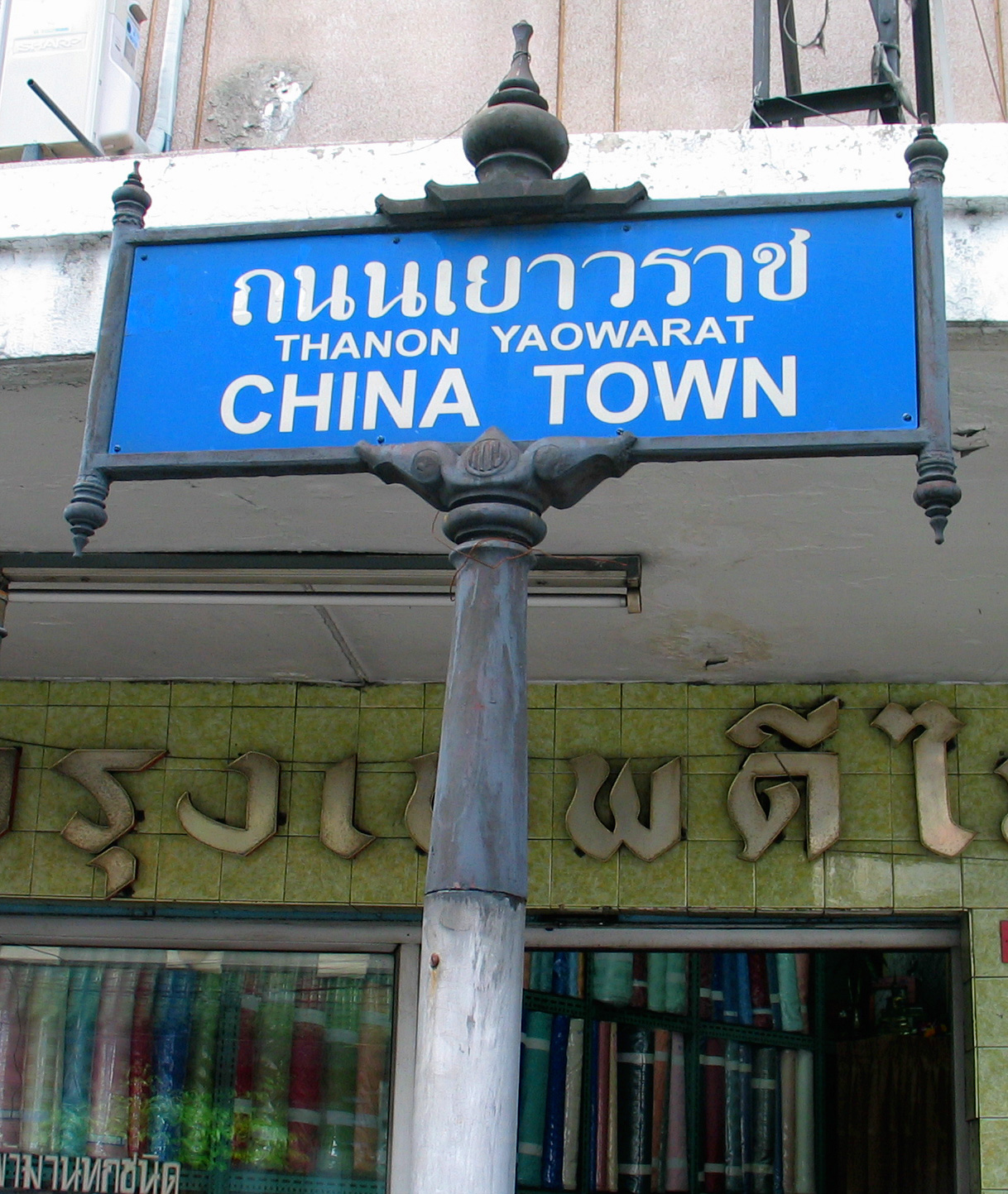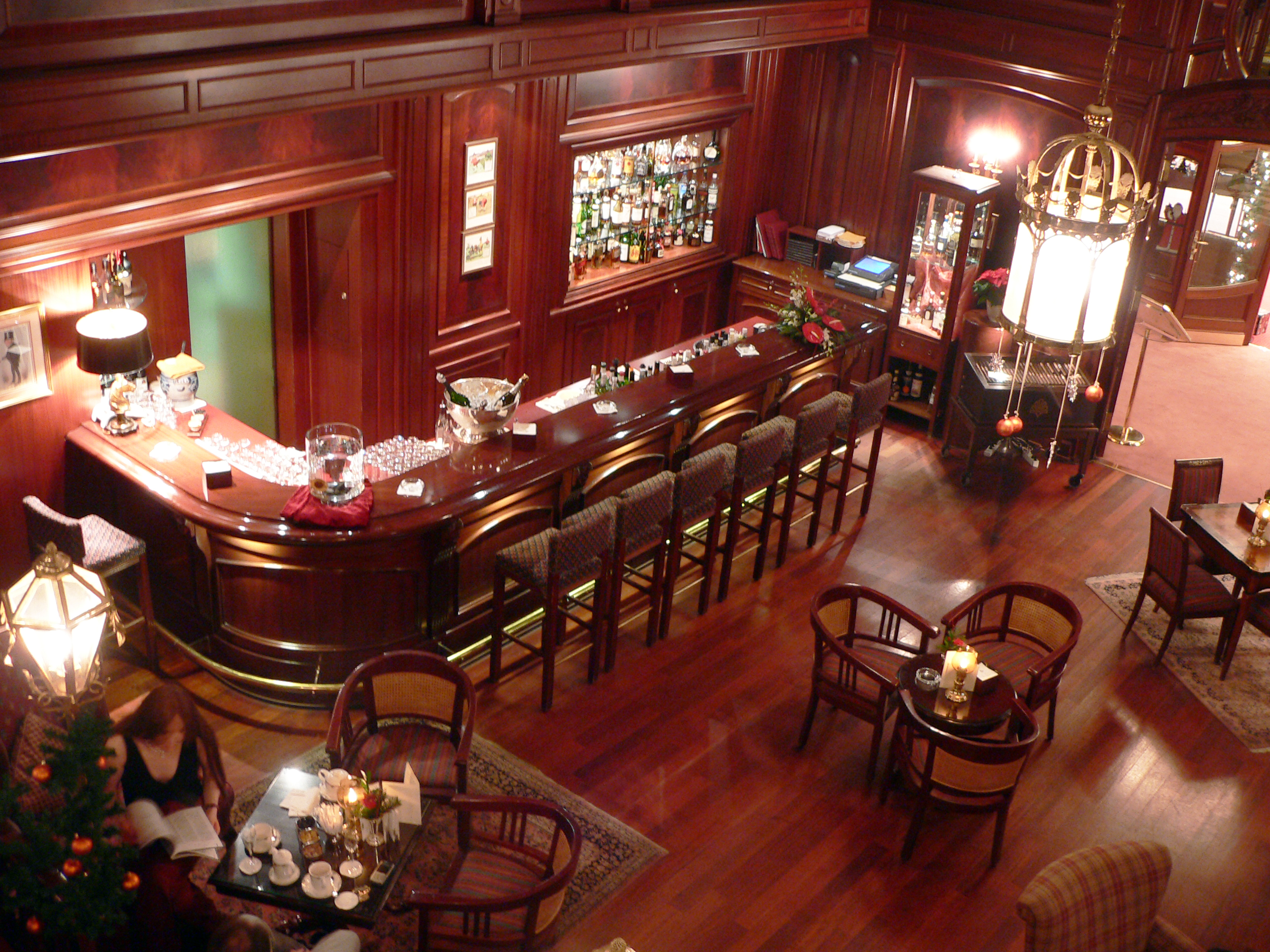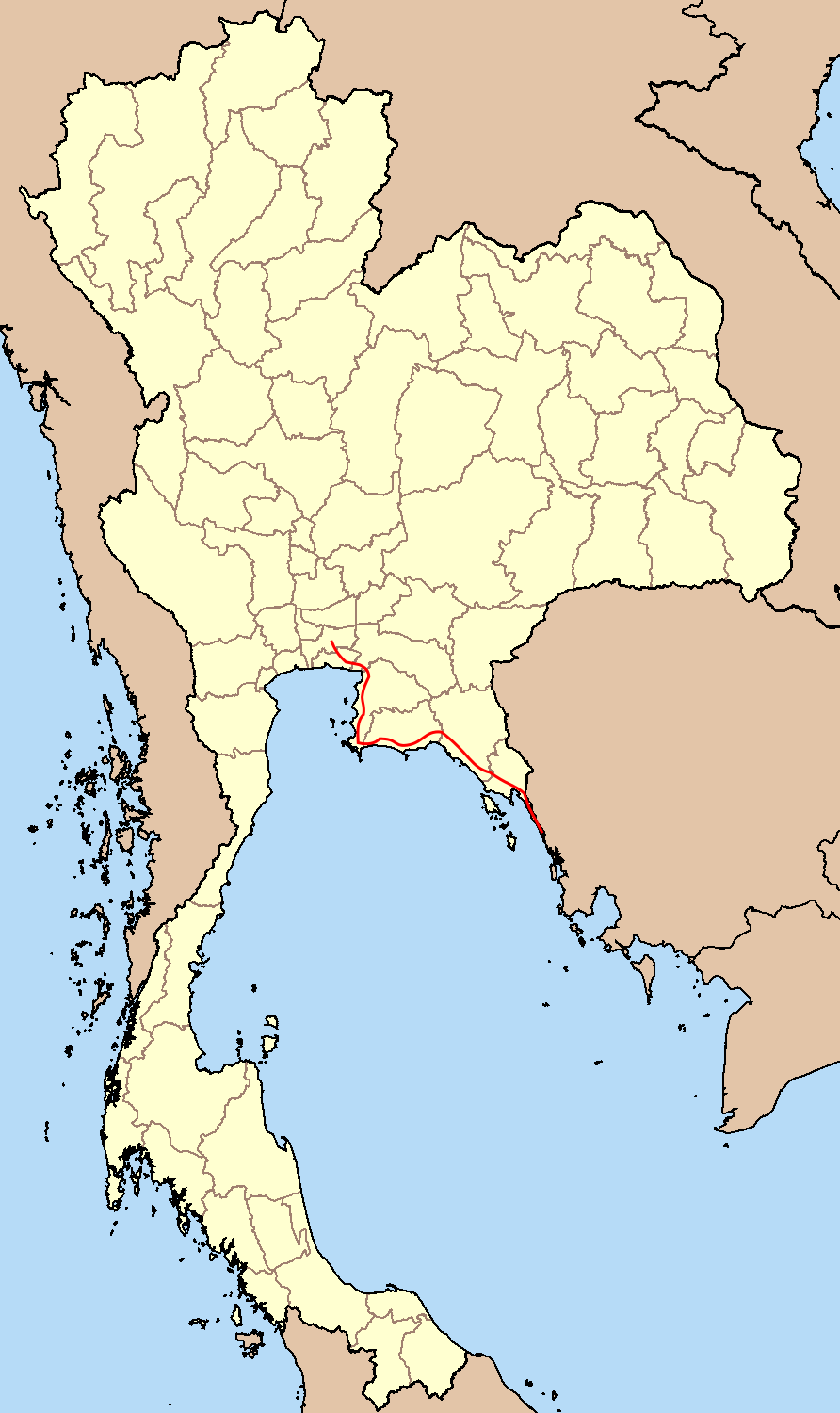|
Soi Nana (Chinatown)
Soi Nana ( th, ซอยนานา, ) is an alley linking Maitrichit Road and Rama IV Road in the area of Chinatown of Bangkok. It takes only 4 minutes to walk from Yaowarat Road. Nana is nestled between the old culture of China and the invading modernism. It is famous for being a hipster bar street in Bangkok where modern culture meets with the traditional Thai-Chinese culture of the Bangkok. History and development This little alley has always changed since the Era of "Gangsters in the City" (in the 1950s). In the 1950s and 1960s, Soi Nana used to be a horde of gangsters as almost every street of Bangkok had “owners”. The community in this era is dark and scary form the power of the gangs. When the time passed, all of those gangsters fell, and Soi Nana gradually changed into a large Chinese drugstore area according to immigrating Chinese who lived in the area. Until now, the smell of herbal remedies is still embedded in the community. In the 2010s, from being isolat ... [...More Info...] [...Related Items...] OR: [Wikipedia] [Google] [Baidu] |
Rama IV Road
Rama IV Road ( th, ถนนพระรามที่ 4, ; usually shortened to , ) is a main road in Bangkok, Thailand. It starts at Mo Mi Junction in the area of Bangkok's Chinatown in Samphanthawong and Pom Prap Sattru Phai Districts and ends at the junction with Sukhumvit Road ( Phra Khanong Junction) in Khlong Toei District near Bangkok Port, also known as Khlong Toei Port. Bordering the road are the Hua Lamphong railway station, Wat Hua Lamphong, New Sam Yan Market, Lumphini Park and Rama VI Memorial Plaza, King Chulalongkorn Memorial Hospital and Queen Saovabha Memorial Institute, the Metropolitan Electricity Authority, and the headquarters of Channel 3. The MRT Blue Line snakes underneath Rama IV Road between Hua Lamphong MRT Station and Queen Sirikit National Convention Center MRT Station. History This road was built in the year 1857 during the reign of King Mongkut (Rama IV) and can be considered as the first real road in Thailand. It was built about four y ... [...More Info...] [...Related Items...] OR: [Wikipedia] [Google] [Baidu] |
Chinatown, Bangkok
Bangkok's Chinatown is one of the largest Chinatowns in the world. It was founded in 1782 when the city was established as the capital of the Rattanakosin Kingdom, and served as the home of the mainly Teochew immigrant Chinese population, who soon became the city's dominant ethnic group. Originally centred around Sampheng, the core of Chinatown now lies along Yaowarat Road, which serves as its main artery and sometimes lends its name to the entire area, which is often referred to as Yaowarat ( th, เยาวราช). Chinatown's entire area roughly coincides with Samphanthawong District, and includes neighbourhoods such as Song Wat and Talat Noi along the Chao Phraya River, and Charoen Chai, Khlong Thom and Nakhon Khasem along Charoen Krung Road. Originally a wilderness area outside the city walls, Chinatown grew to become Bangkok's commercial hub throughout the late 19th to early 20th centuries, but has since declined in prominence as commercial activity moved elsewhe ... [...More Info...] [...Related Items...] OR: [Wikipedia] [Google] [Baidu] |
Bangkok
Bangkok, officially known in Thai language, Thai as Krung Thep Maha Nakhon and colloquially as Krung Thep, is the capital and most populous city of Thailand. The city occupies in the Chao Phraya River delta in central Thailand and has an estimated population of 10.539 million as of 2020, 15.3 percent of the country's population. Over 14 million people (22.2 percent) lived within the surrounding Bangkok Metropolitan Region at the 2010 census, making Bangkok an extreme primate city, dwarfing Thailand's other urban centres in both size and importance to the national economy. Bangkok traces its roots to a small trading post during the Ayutthaya Kingdom in the 15th century, which eventually grew and became the site of two capital cities, Thonburi Kingdom, Thonburi in 1768 and Rattanakosin Kingdom (1782–1932), Rattanakosin in 1782. Bangkok was at the heart of the modernization of Siam, later renamed Thailand, during the late-19th century, as the country faced pressures from the ... [...More Info...] [...Related Items...] OR: [Wikipedia] [Google] [Baidu] |
Yaowarat Road
Yaowarat Road ( th, ถนนเยาวราช, ; ) in Samphanthawong District is the main artery of Bangkok's Chinatown. Modern Chinatown now covers a large area around Yaowarat and Charoen Krung Road. It has been the main centre for trading by the Chinese community since they moved from their old site some 200 years ago to make way for the construction of Wat Phra Kaew, the Grand Palace. Nearby is the Phahurat or Little India. The area is bordered by the Chao Phraya River to the south. Yaowarat Road is well known for its variety of foodstuffs, and at night turns into a large "food street" that draws tourists and locals from all over the city. History Chinatown is in one of the oldest areas of Bangkok. It is the result of the resettlement of Chinese on the west bank of Chao Phraya River after King Rama I moved the capital of the kingdom from Thonburi to Rattanakosin. From there Chinese traders operated maritime junk trade between (Siam) and China throughout the Rattanak ... [...More Info...] [...Related Items...] OR: [Wikipedia] [Google] [Baidu] |
China
China, officially the People's Republic of China (PRC), is a country in East Asia. It is the world's most populous country, with a population exceeding 1.4 billion, slightly ahead of India. China spans the equivalent of five time zones and borders fourteen countries by land, the most of any country in the world, tied with Russia. Covering an area of approximately , it is the world's third largest country by total land area. The country consists of 22 provinces, five autonomous regions, four municipalities, and two Special Administrative Regions (Hong Kong and Macau). The national capital is Beijing, and the most populous city and financial center is Shanghai. Modern Chinese trace their origins to a cradle of civilization in the fertile basin of the Yellow River in the North China Plain. The semi-legendary Xia dynasty in the 21st century BCE and the well-attested Shang and Zhou dynasties developed a bureaucratic political system to serve hereditary monarchies, or dyna ... [...More Info...] [...Related Items...] OR: [Wikipedia] [Google] [Baidu] |
Hipster (contemporary Subculture)
The 21st-century hipster is a subculture (sometimes called hipsterism). Fashion is one of the major markers of hipster identity. Members of the subculture typically do not self-identify as hipsters, and the word ''hipster'' is often used as a pejorative for someone who is pretentious or overly concerned with appearing trendy. Stereotypical fashion elements include vintage clothes, alternative fashion, or a mixture of different fashions, often including skinny jeans, checked shirts, knit beanies, a full beard or deliberately attention-grabbing moustache, and thick-rimmed or lensless glasses. The subculture is often associated with indie and alternative music. In the United States, it is mostly associated with perceived upper-middle-class white young adults who gentrify urban areas. The subculture has been critiqued as lacking authenticity, promoting conformity and embodying a particular ethic of consumption that seeks to commodify the idea of rebellion or counterculture. Th ... [...More Info...] [...Related Items...] OR: [Wikipedia] [Google] [Baidu] |
Thai Chinese
Thai Chinese (also known as Chinese Thais, Sino-Thais), Thais of Chinese origin ( th, ชาวไทยเชื้อสายจีน; ''exonym and also domestically''), endonym Thai people ( th, ชาวไทย), are Chinese descendants in Thailand. Thai Chinese are the largest minority group in the country and the largest overseas Chinese community in the world with a population of approximately 7-10 million people, accounting for 11–14% of the total population of the country as of 2012. It is also the oldest and most prominent integrated overseas Chinese community. Slightly more than half of the ethnic Chinese population in Thailand trace their ancestry to Chaoshan. This is evidenced by the prevalence of the Teochew dialect among the Chinese community in Thailand as well as other Chinese languages.The term as commonly understood signifies those whose ancestors immigrated to Thailand before 1949. The Thai Chinese have been deeply ingrained into all elements of Thai ... [...More Info...] [...Related Items...] OR: [Wikipedia] [Google] [Baidu] |
Cafes
A coffeehouse, coffee shop, or café is an establishment that primarily serves coffee of various types, notably espresso, latte, and cappuccino. Some coffeehouses may serve cold drinks, such as iced coffee and iced tea, as well as other non-caffeinated beverages. In continental Europe, cafés serve alcoholic drinks. A coffeehouse may also serve food, such as light snacks, sandwiches, muffins, fruit, or Pastry, pastries. Coffeehouses range from owner-operated small businesses to large multinational corporations. Some coffeehouse chains operate on a Franchising, franchise business model, with numerous branches across various countries around the world. While ''café'' may refer to a coffeehouse, the term "café" generally refers to a diner, British café (colloquially called a "caff"), "greasy spoon" (a small and inexpensive restaurant), transport café, teahouse or tea room, or other casual eating and drinking place. A coffeehouse may share some of the same characteristics of a b ... [...More Info...] [...Related Items...] OR: [Wikipedia] [Google] [Baidu] |
Bar (establishment)
A bar, also known as a saloon, a tavern or tippling house, or sometimes as a pub or club, is a retail business establishment that serves alcoholic beverages, such as beer, wine, liquor, cocktails, and other beverages such as mineral water and soft drinks. Bars often also sell snack foods, such as crisps or peanuts, for consumption on their premises. Some types of bars, such as pubs, may also serve food from a restaurant menu. The term "bar" refers to the countertop where drinks are prepared and served, and by extension to the overall premises. The term derives from the metal or wooden bar (barrier) that is often located along the length of the "bar". Over many years, heights of bars were lowered, and high stools added, and the brass bar remains today. Bars provide stools or chairs that are placed at tables or counters for their patrons. Bars that offer entertainment or live music are often referred to as "music bars", "live venues", or "nightclubs". Types of bars ra ... [...More Info...] [...Related Items...] OR: [Wikipedia] [Google] [Baidu] |
Nightlife
Nightlife is a collective term for entertainment that is available and generally more popular from the late evening into the early hours of the morning. It includes pubs, bars, nightclubs, parties, live music, concerts, cabarets, theatre, cinemas, and shows. These venues often require a cover charge for admission. Nightlife entertainment is often more adult-oriented than daytime entertainment. People who prefer to be active during the night-time are called night owls. History The lack of electric lighting, as well as the needs of agricultural labor, made staying up after dark difficult for most people. Larger ancient cities, such as Rome, had a reputation for danger at night. This changed in 17th- and 18th-century Europe (and subsequently spread beyond) due to the development and implementation of artificial lighting: more domestic lights, added street lighting, and adaptation by the royal and upper social classes. The introduction of chocolate, coffee and tea, and cafes t ... [...More Info...] [...Related Items...] OR: [Wikipedia] [Google] [Baidu] |
Sathon District
Sathon or Sathorn ( th, สาทร, ) is one of the 50 districts (''khet'') of Bangkok, Thailand. The district is bounded by six other districts (from north clockwise): Bang Rak, Pathum Wan, Khlong Toei, Yan Nawa, Bang Kho Laem, and Khlong San (across the Chao Phraya River). History Sathon district was once part of Yan Nawa. Due to its large area and population, first a branch district office of Yan Nawa was set up on 9 March 1989 to serve the people in three ''khwaeng'' of Yan Nawa. And then on 9 November 1989, the Sathon district was established inheriting the area once served by the branch office. The district is named after Sathon Road and Khlong Sathon. Khlong Sathon, the older of the two, is a canal (''khlong'') dug for public transportation by a Chinese company. The Chinese owner was later granted the name ''Luang Sathon Racha Yut'' (หลวงสาทรราชายุตก์) by King Chulalongkorn for his accomplishment. Both sides of the canal later beca ... [...More Info...] [...Related Items...] OR: [Wikipedia] [Google] [Baidu] |
Sukhumvit Road
Sukhumvit Road ( th, ถนนสุขุมวิท, , ), or Highway 3 ( th, ทางหลวงแผ่นดินหมายเลข 3), is a major road in Thailand, and a major surface road of Bangkok and other cities. It follows a coastal route from Bangkok to Khlong Yai District, Trat border to Koh Kong, Cambodia. Sukhumvit Road is named after the fifth chief of the Department of Highways, Phra Bisal Sukhumvit. It is one of the four major highways of Thailand, along with Phahonyothin Road (Highway 1), Mittraphap Road (Highway 2) and Phetkasem Road (Highway 4). Route Sukhumvit Road begins in Bangkok, as a continuation of Rama I and Phloen Chit Roads which span Pathum Wan District. Starting from where the boundaries of the districts of Khlong Toei, Pathum Wan and Watthana meet, it runs the entire length of the border between Khlong Toei and Watthana, then passes through Phra Khanong and Bang Na districts. It then crosses the border between Bangkok and S ... [...More Info...] [...Related Items...] OR: [Wikipedia] [Google] [Baidu] |
.jpg)
.jpg)







